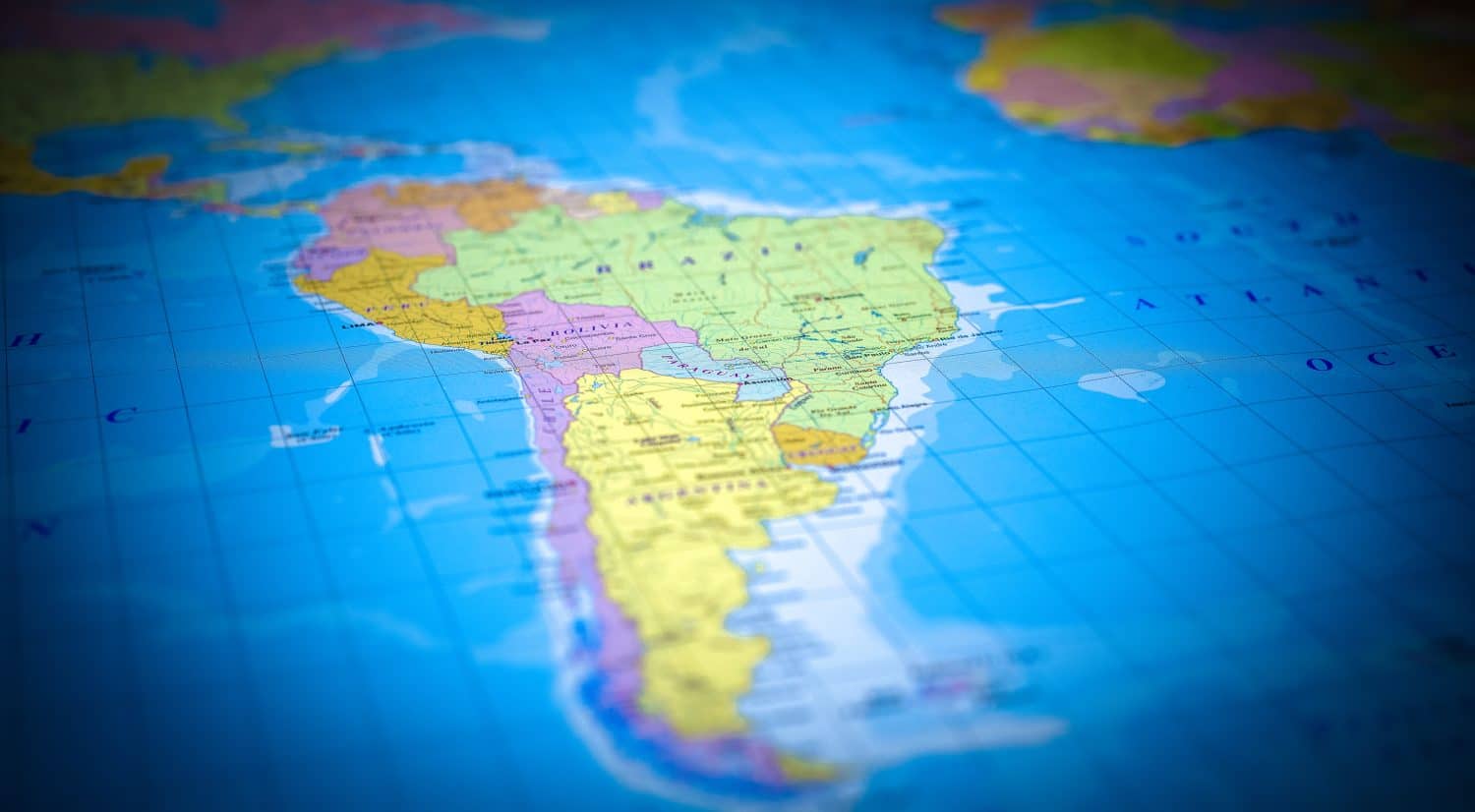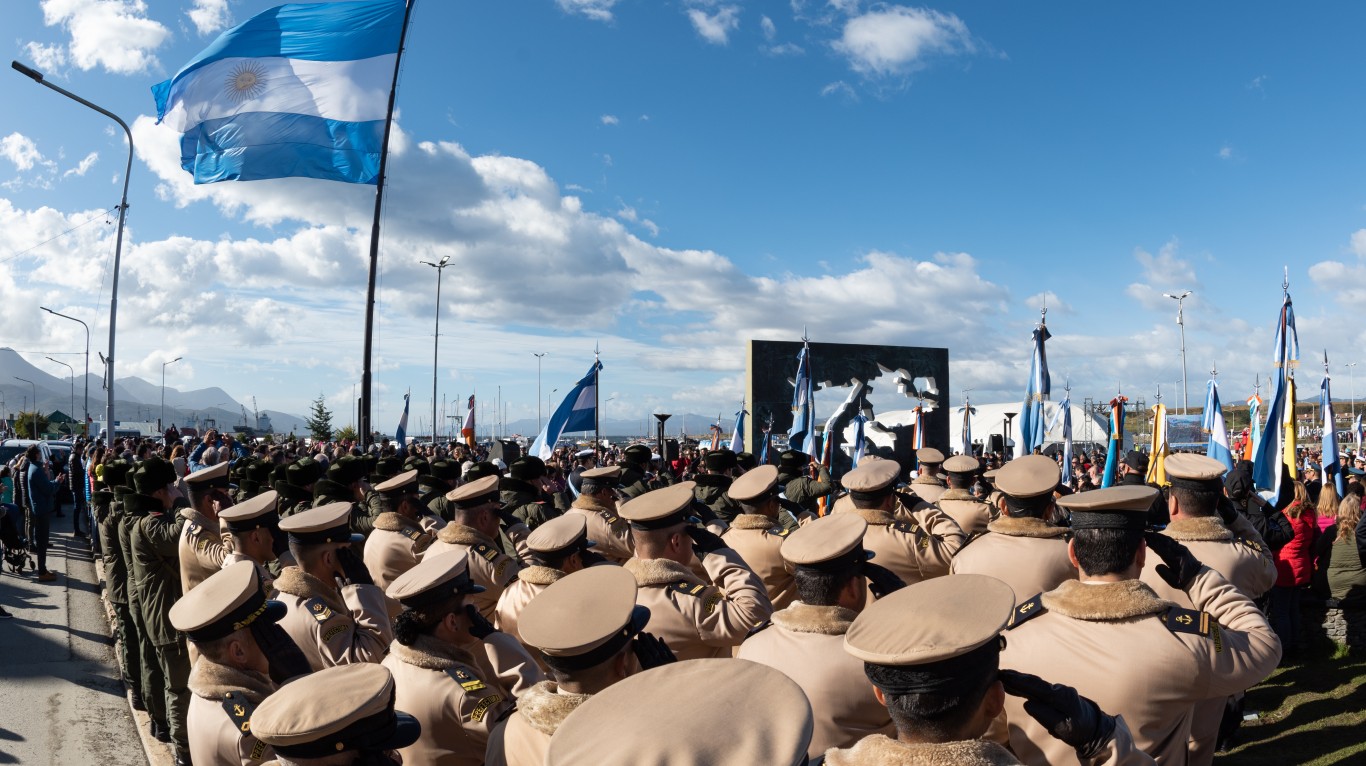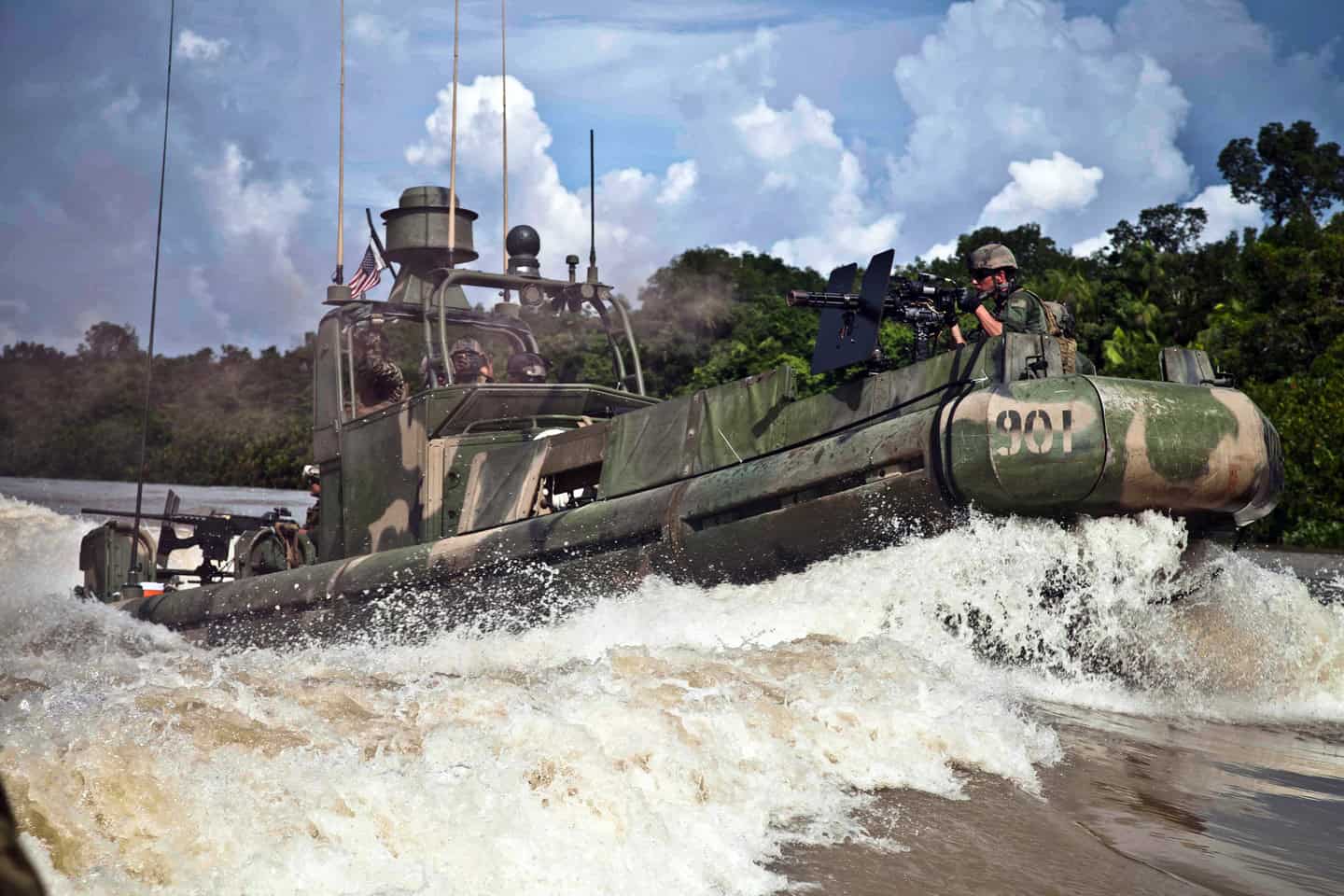Military
This American Adversary Controls the Largest Paramilitary Force in South America

Published:

The term “paramilitary” refers to a wide range of organizations throughout South America, from rural defense militias to urban enforcement groups. These forces are deeply embedded in the history of the continent, ultimately influencing security policies and how these countries are run. Here, 24/7 Wall St. is exploring the South American countries with the largest paramilitary forces.
To identify the South American countries with the most paramilitary personnel, 24/7 Wall St. reviewed 2024 Military Strength Ranking from Global Firepower, an annually updated defense-related statistics website with information on 145 countries. Countries were ranked on the total number of paramilitary personnel. We included supplemental information regarding total personnel, active personnel, reserves, total population, fit-for-service, and overall military strength score. Countries without any paramilitary forces were excluded.

Understanding the military dynamics of South America is important considering the region’s evolving geopolitical landscape and its strategic importance. Historically, South America has experienced internal conflicts and border tensions, but its military presence is now key in maintaining regional stability and security.
Outside of its troops, Suriname also has a total of 3 aircraft, 650 military vehicles, as well as 16 ships and/or submarines at its disposal.
Despite not mustering a sizable military force, the rule of the people persists. However, what forces Suriname does have train with U.S. Armed forces, notably the South Dakota National Guard as part of a State Partnership Program.
It should be noted that Suriname’s military history was largely shaped by its colonial past, only gaining independence from the Netherlands in 1975. The country came under civilian rule for a few years, but a military coup in 1980, known as the “Sergeants Coup”, reshaped the government and marked the beginning of military rule for some time. It would not be the only coup, but it would impact how the people view the military for years to come.
After returning to democratic rule in the 1990s, Suriname looked to decrease the military’s influence, which explains the state of its military today.
Outside of its troops, Ecuador also has a total of 110 aircraft, 5,662 military vehicles (including 55 tanks and 35 MLRS units), as well as 27 ships and/or submarines at its disposal.
Throughout the 20th century, Ecuador experienced multiple military coups, most notably in 1972 when General Guillermo Rodríguez Lara took control of the government. His rule lasted until 1979, when the country shifted back to democratic rule. However, like many other South American countries, the people were wary of military power.
Today, the main responsibilities of Ecuador’s military are protecting its national sovereignty, addressing security threats like drug trafficking, and providing disaster relief where needed.
Outside of its troops, Uruguay also has a total of 43 aircraft, 3,993 military vehicles (including 39 tanks and 4 MLRS units), as well as 11 ships and/or submarines at its disposal.
During the 20th century, Uruguay was subject to military rule, most notably during the Bordaberry dictatorship starting in 1973, when the military seized control of the government in response to political instability. Democracy was restored in 1985, and like Suriname, the government moved to reduce the influence of the military.
One of the main shifts from the militaristic rule was repurposing Uruguay’s armed forces to a more passive and defensive role. Instead of trying to project power, Uruguay’s military is typically more involved in disaster relief, peacekeeping missions, and internal security.
Outside of its troops, Paraguay also has a total of 41 aircraft and 1,936 military vehicles (including 10 tanks) at its disposal.
As it stands now, the Paraguayan military is now more internally focused on defense and maintaining security within the country. And as such, Paraguay doesn’t need a large force to accomplish its objectives.
To give some historical context, after gaining independence in 1811, Paraguay’s military played a big role in the country’s defense, especially during the War of the Triple Alliance in the later 1800s. Since then, the military became more involved in state affairs, especially during the 20th century. And like many other South American countries, Paraguay’s military has been closely tied with its politics.
This led to the dictatorship of General Alfredo Stroessner, who took control in 1954 and ruled until 1989. It wasn’t until Stroessner was overthrown that Paraguay began its slow journey back to democracy, diminishing the influence of the military over the years.

Outside of its troops, Argentina also has a total of 229 aircraft, 21,724 military vehicles (including 348 tanks and 26 MLRS units), as well as 41 ships and/or submarines at its disposal.
Throughout the 20th century, Argentina suffered through multiple wars and dictatorships. This largely crafted how the Argentine Armed Forces handles itself today.
One of the most infamous instances was the Dirty War that took place from 1976 to 1983. General Jorge Rafael Videla overthrew the government and, through the military, targeted people it suspected of opposing the government, resulting in the disappearance, torture, and death of thousands. This was part of a larger collaboration, Operation Condor, between dictatorships across the continent.
Ultimately, this dictatorship would come crashing down when Argentina fought the Falklands War against the United Kingdom. The defeat was a major blow to the dictatorship and resulted in the people turning against the government and back towards democratic rule. With this push, the military waned in influence in the decades to come.
Outside of its troops, Chile also has a total of 289 aircraft, 9,492 military vehicles (including 270 tanks and 20 MLRS units), as well as 130 ships and/or submarines at its disposal.
Like its neighbors, Chile has an interesting history of military and politics. Known as one of the most brutal dictators of South America, General Augusto Pinochet took control of the Chilean government in 1973. Pinochet ruled as a military dictator until 1990, with many human rights abuses and political repression. The military also saw a massive expansion during this time adding tanks and aircraft to its arsenal.
Pinochet was also famous for his involvement in Operation Condor, where dictatorships across the continent moved to snuff out or suppress their political rivals in a collaborative effort. This covert operation would ultimately strengthen the military’s grasp over Chile and any dissidents that might oppose it.
After Pinochet lost power in 1990, the military was relegated to a much lesser role. Since then, the military has focused more on national security as well as disaster relief, especially since Chile is prone to natural disasters like earthquakes and tsunamis.
Outside of its troops, Peru also has a total of 258 aircraft, 7,896 military vehicles (including 261 tanks and 73 MLRS units), as well as 69 ships and/or submarines at its disposal.
Peru has a long military history, including several coups and times of military rule. These events helped shape the Peruvian Armed Forces into what they are today, with more of a focus on security and defense. Even though the military now has a smaller role, it is still one of the stronger forces in South America.
General Juan Velasco Alvarado held power over the country between 1968 and 1980, ultimately implementing land reforms and nationalizing key industries. Ironically, Velasco was overthrown in another military coup by General Francisco Morales Bermudez, who actually moved the country back towards a democracy.
In recent decades, the Peruvian military was involved in counterinsurgency operations, notably against the Shining Path, a far-left guerilla group. While the government eventually cut down the group’s influence, the Peruvian military continues to combat what’s left of the group in remote areas of the country. Outside of that, Peru’s military primarily operates in peacekeeping missions and disaster relief.

Outside of its troops, Colombia also has a total of 434 aircraft, 2,724 military vehicles, as well as 237 ships and/or submarines at its disposal.
Colombia’s military has played a significant role in shaping the country’s politics, and even now it is one of the largest forces in South America. While other nations are mainly focused on peacekeeping and national security, Colombia has a very distinct focus on counterinsurgency and jungle warfare.
For decades Colombia’s military has been fighting against far-left guerrilla groups like the FARC and ELN. The military has been in conflict with FARC since the 1960s, until recently when the group signed a peace agreement and disbanded. The ELN still continues to carry out attacks and is considered to be one of the last guerrilla groups active in Colombia.
Currently, Colombia’s military continues to fight drug cartels and protect its borders. While it does some international peacekeeping missions, its focus is mainly internal.

Outside of its troops, Brazil also has a total of 628 aircraft, 44,044 military vehicles (including 469 tanks and 78 MLRS units), as well as 134 ships and/or submarines at its disposal.
Out of all the countries in South America, Brazil is considered to have the strongest military force. Officially known as the Brazilian Armed Forces, it consists of three branches, Army, Navy, and Air Force. Like every other nation on this list, Brazil had its brush with coups and military dictatorships.
One of the most important periods in time for this country began in 1964, when the military took control of the government. In the wake of the coup, the military regime carried out countless human rights abuses and censored its people. By 1985, Brazil returned to a civilian government but unlike its neighbors, the military still held significant sway for some time.
Now, Brazil’s military is primarily focused on national defense. It has conducted peacekeeping missions with the United Nations to countries like Haiti and Lebanon. The military also works to protect the Amazon rainforest from illegal activities like deforestation or drug trafficking.

Outside of its troops, Venezuela also has a total of 242 aircraft, 14,966 military vehicles (including 180 tanks and 36 MLRS units), as well as 32 ships and/or submarines at its disposal.
Venezuela is an interesting case study in militaries in South America. Some might argue that it is still under military rule, and that it has not returned to democratic rule like other nations on the continent.
Although the country had returned to democratic rule in the 1950s after suffering a number of coups and instability, it would ultimately revert back in 1999 when Hugo Chavez rose to power. Chavez was a former military officer and gained popularity with the citizenry, enough to create a citizen militia that blurred the lines between politics and military.
Chavez’s successor, Nicolas Maduro, is currently in power and he is seeking a third term as the President of Venezuela. Again, critics will argue the electoral process in Venezuela is less than transparent. However, one thing Maduro has done is grow the military.
Start by taking a quick retirement quiz from SmartAsset that will match you with up to 3 financial advisors that serve your area and beyond in 5 minutes, or less.
Each advisor has been vetted by SmartAsset and is held to a fiduciary standard to act in your best interests.
Here’s how it works:
1. Answer SmartAsset advisor match quiz
2. Review your pre-screened matches at your leisure. Check out the advisors’ profiles.
3. Speak with advisors at no cost to you. Have an introductory call on the phone or introduction in person and choose whom to work with in the future
Thank you for reading! Have some feedback for us?
Contact the 24/7 Wall St. editorial team.